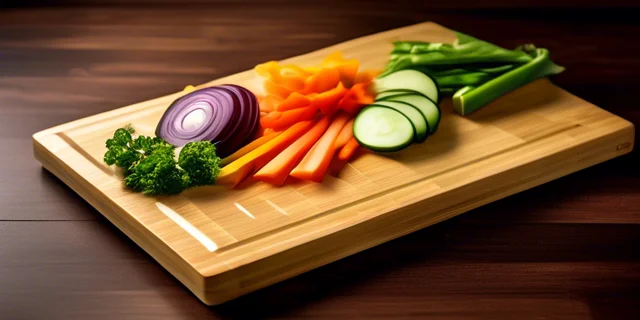As an Amazon Associate I earn from qualifying purchases.
Kitchen cutting boards come in a variety of materials – plastic, wood, glass, and bamboo. With so many options, it can be tricky to determine which material makes the best cutting board. Many home cooks and chefs are starting to take notice of bamboo cutting boards and their potential benefits. But Is bamboo good for cutting boards? This comprehensive guide takes an in-depth look at the pros and cons of bamboo cutting boards.
The Many Advantages of Choosing Bamboo Cutting Boards
There are many compelling reasons to choose bamboo over other cutting board materials:
- Extreme Durability: High-quality bamboo cutting boards can easily last for decades with proper care. The hardy nature of bamboo makes it resistant to knife scarring, cracking, and splintering.
- Sustainability: As one of the fastest growing and renewable plants, bamboo is an excellent eco-friendly choice. Bamboo resists pests naturally without chemicals too.
- Resistance to Bacteria: Bamboo has natural antimicrobial properties that prevent the growth and spread of bacteria more effectively than plastic or wood.
- Attractive Appearance: Bamboo boards come in various stain colors to fit any kitchen décor. The minimal yet beautiful grain patterns add style to the kitchen.
- Easy on Knives: Unlike some wood boards that can soften knife edges over time, bamboo’s hardness preserves the blades of even high-quality knives.
With all these advantages, it’s easy to see why bamboo cutting boards are becoming so popular as both beautiful and functional kitchen tools.
Bamboo Boards Are Sturdy and Will Last for Years
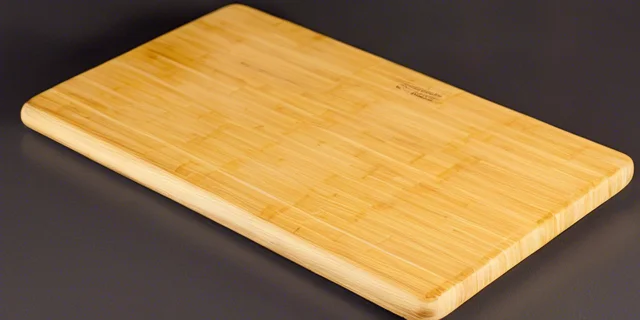
One of the standout benefits of choosing bamboo cutting boards is their unmatched durability:
- The dense fibers and smooth grain of bamboo make it extremely hardy and resistant to heavy use. Even with daily slicing and dicing, bamboo holds up without splitting or cracking.
- While plastic and glass boards tend to show wear and degrade over time, high-quality bamboo boards withstand generations of use. Many bamboo boards last for 20-30 years or more.
- Bamboo’s water resistant nature prevents warping, damage from moisture, or growth of mold and mildew.
No matter how often you use it, a bamboo cutting board will stand the test of time while maintaining its integrity and appearance. The combination of strength and stability means you likely won’t need to replace a bamboo board for decades.
When examining the durability of various cutting board options, bamboo consistently rises above the rest:
- Plastic: Plastic cutting boards often show scratching, grooving, and wear after just a few years of regular kitchen use. The petroleum-based materials slowly degrade with repeated cutting.
- Glass: While glass has a sleek appearance, it lacks the forgiving surface needed for a cutting board. The hardness of glass causes damage to knife edges while also chipping and cracking easily.
- Wood: Natural wood boards can last for many years with care. However, exposure to moisture, warping, and knife scars take a toll on wood more quickly than bamboo.
No other common cutting board material has the physical durability and resilience of high-density bamboo. The sturdy nature keeps bamboo boards looking pristine and prevents any flexing, warping, or damage during use. Many bamboo boards will still look brand new after a decade of heavy kitchen use.
The Renewable, Eco-Friendly Properties of Bamboo
In addition to being durable, bamboo is one of the most environmentally sustainable cutting board options:
- Bamboo is a fast-growing grass that regenerates rapidly without the need to replant. Most varieties reach maturity within 3-5 years.
- Bamboo resists pests and diseases naturally, so harmful pesticides are rarely needed.
- Bamboo is biodegradable and can be recycled once a board reaches the end of its useful life.
- Sourcing bamboo follows renewable harvesting practices, allowing new shoots to continually replace cut stalks.
- Bamboo has very low natural moisture content, so it requires less energy for processing compared to wood.
Choosing a bamboo cutting board is a planet-friendly way to outfit your kitchen with a tool that will serve you for many years. The renewability and low environmental impact make bamboo an excellent green choice.
Here is an in-depth comparison of how bamboo stacks up against other common cutting board materials in terms of environmental sustainability:
- Plastic: Plastic is made from non-renewable petroleum resources. It takes centuries to form naturally. Most plastics are not biodegradable or easily recyclable.
- Wood: Trees used for wood boards take a minimum of 10 years to regenerate, sometimes longer. Deforestation and chemical treatments raise sustainability concerns.
- Glass: Glass cutting boards are produced through energy-intensive manufacturing using non-renewable sand. Not readily recyclable or biodegradable.
- Bamboo: Bamboo regrows rapidly after harvesting and sequesters substantial carbon. Production uses fewer chemicals and energy compared to wood or plastic boards. Fully biodegradable.
As an incredibly renewable resource that regrows in a fraction of the time compared to trees, bamboo is clearly the stand-out eco-friendly choice. The low energy requirements for production and biodegradable nature make bamboo cutting boards a truly green kitchen product.
Is Bamboo Good For Cutting Boards? The Safety and Cleanlines
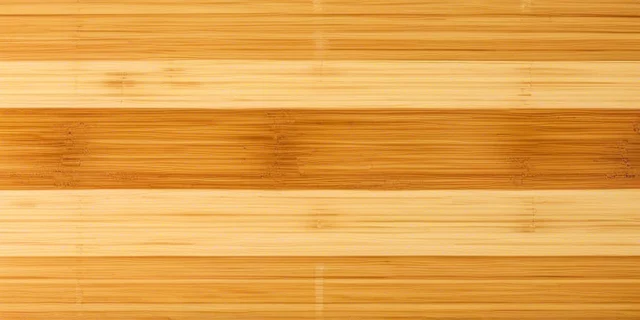
In addition to sustainability, bamboo offers some useful advantages in terms of safety and hygiene:
- Resists Bacteria: The natural antimicrobial properties of bamboo inhibit the growth of dangerous bacteria like E. coli or Salmonella. Studies show bamboo harbors far less bacteria than plastic or wood.
- Can Cut Meat Safely: Due to its resistance to bacteria, cutting meat on bamboo causes no safety issues. Proper cleaning and sanitizing keeps the board safe for all uses.
- Non-Porous: Bamboo’s tight grain makes it less prone to trapping food debris compared to more porous wood boards. This allows for easy cleaning.
- No Chemicals or Splinters: Bamboo won’t leach chemicals or release splinters like lower quality wood or composite boards might.
With proper care and cleaning, bamboo boards provide a hygienic, safe surface for all cutting tasks from meat to veggies. The peace of mind from the antimicrobial properties and smooth surface make it an ideal choice for any kitchen.
Here is more detail on how bamboo stacks up against other cutting board materials in terms of safety and hygiene:
- Plastic: Plastic boards harbor bacteria in grooves and scratches. Heat and chemical sanitizing can release BPA and other substances.
- Wood: Natural wood is prone to warping and splintering over time, making cleaning difficult. Can harbor mold or bacteria in porous surface.
- Glass: Glass is too hard and unforgiving for safe cutting. Risk of shards if the material chips or breaks.
- Bamboo: Naturally resists microbial growth better than plastic or wood. Tight grain prevents debris buildup. No risk of chemicals leaching.
The anti-microbial characteristics form one of bamboo’s greatest advantages compared to other materials. Knowing your cutting board resists harmful bacteria growth allows for safe, hygienic meal preparation.
How Bamboo and Plastic Cutting Boards Compare
Plastic cutting boards have been a popular choice due to low cost and convenience. But bamboo boards have some clear advantages:
- Durability: Constant use wears down plastic boards quicklyleading to grooves that trap bacteria. Bamboo can last 20x longer.
- Knife Wear: Bamboo causes less dulling of knives compared to most plastics. The durable surface holds up to sharp blades better.
- Sustainability: Plastics are made from non-renewable petroleum. Bamboo is renewable and biodegradable.
- Appearance: Bamboo looks attractive with natural grain patterns versus the monotone plastic.
- Sanitation: Plastic can get ingrained with bacteria over time. Bamboo resists microbial growth better.
While plastic is inexpensive initially, it lacks the longevity and eco-friendly properties of bamboo. Investing in a quality bamboo board pays dividends over time.
| Plastic | Bamboo | |
|---|---|---|
| Durability | Low | High |
| Knife Wear | High | Low |
| Sustainability | Low | High |
| Appearance | Fair | Great |
| Resistance to Bacteria | Low | High |
Plastic gained popularity decades ago as an inexpensive, easy-care option for cutting boards. However, the drawbacks have become more apparent over time:
- Grooves and micro-scratches in the surface harbor bacteria that can be difficult to fully sanitize.
- Exposure to heat and cleaning chemicals like bleach or disinfectants can release BPA and other substances from the plastic.
- Plastic is slow to biodegrade and most types cannot be easily recycled. The petroleum-based materials linger in landfills.
- The monotone colors and lack of texture give plastic boards a clinical, unattractive look.
With the greater understanding of bacteria and environmental impacts now, bamboo rises above plastic in nearly every performance category. The natural sustainability and antimicrobial properties of bamboo make it the wiser choice.
Comparing Bamboo and Wood Cutting Boards
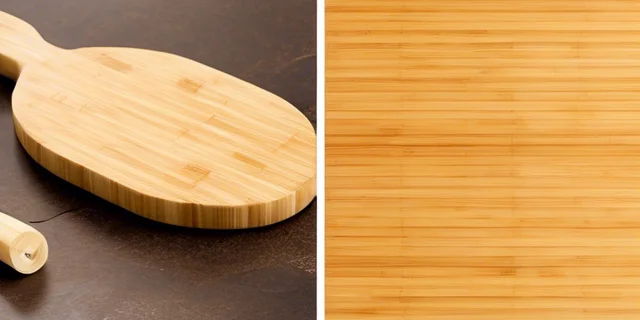
Wood boards have been used for generations, but bamboo stacks up well in terms of performance:
- Hardness: The dense bamboo fiber prevents knife scarring compared to softer woods like basswood or pine.
- Stability: Bamboo resists moisture absorption better than most woods, preventing cracking or warping.
- Sustainability: Many woods require 10+ years before regeneration. Bamboo matures rapidly in 3-5 years.
- Sanitation: Bamboo has natural antimicrobial properties that inhibit bacteria growth more than wood.
- Knife Wear: Soft woods slowly blunt knife edges, while bamboo maintains sharpness longer.
While wood boards have tradition on their side, bamboo competes well in all performance categories. Bamboo’s strengths make it a reliable choice for everyday cutting tasks.
Here is more detail on how bamboo compares to the pros and cons of natural wood cutting boards:
Pros of Wood Cutting Boards:
- Available in many beautiful grain patterns
- Provides gentle cutting surface if right wood is chosen
- Can be easily sanded and refinished
- Classic look matches many kitchen decors
Cons of Wood Cutting Boards:
- Prone to absorbing moisture and warping
- Can harbor bacteria in porous surface
- Requires periodic re-oiling and sealing
- Not as durable – can show knife marks and wear
- Limited sustainability depending on wood source
Pros of Bamboo Cutting Boards:
- Extremely dense and durable construction
- Resists moisture absorption and warping
- Natural antimicrobial properties
- Sustainable and extremely renewable
- Attractive grain patterns like wood
Cons of Bamboo Cutting Boards:
- Slightly harder surface than some woods
- Susceptible to scratches if low quality
- Needs occasional re-oiling like wood
- Higher cost than basic wood boards
While wood has its appeal, bamboo competes favorably with its sustainability, longevity, and food safe properties. Properly caring for a quality bamboo board helps ensure decades of utility.
Why You Should Consider Bamboo as Your Next Cutting Board
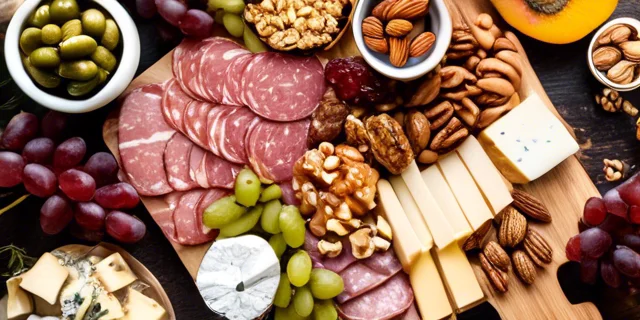
After assessing the pros and cons, the reasons to choose bamboo cutting boards become clear:
- Long-lasting durability: Resists wear, knife scars, and moisture damage for decades of reliable use.
- Eco-friendly choice: Made from renewable, fast-growing bamboo using sustainable practices.
- Safe for all foods: Naturally antimicrobial and resistant to bacteria buildup.
- Preserves knives: Hardness maintains sharp edges without damaging blades.
- Visually appealing: Attractive grain patterns and stain colors fit any kitchen décor.
As a durable, sustainable, and safe cutting surface, bamboo outperforms plastic and competes with wood boards. Investing in a quality bamboo board brings outstanding performance, longevity, and sustainability.
Here are some typical use cases where bamboo cutting boards offer the greatest advantages:
- Everyday Prep Board: The sturdiness of bamboo makes it ideal for daily slicing, dicing, and chopping tasks. It holds up well to repeated use.
- Meat and Poultry Board: The antimicrobial properties provide safe and hygienic meat prep. Bamboo resists bacteria growth from raw proteins.
- Prep Board for Messy Ingredients: The tight grain doesn’t harbor stains or food debris. Spices, beets, garlic and other messy foods wipe clean easily.
- Specialty Pastry and Bread Board: The smooth, firm surface provides an ideal workspace for rolling dough, kneading bread, and pastry work.
- Display Board for Entertaining: The attractive appearance of bamboo boards makes them kitchen decor. Use larger boards for serving charcuterie, cheese, fruit, or other party fare.
No matter the cutting or prep need, a bamboo board is up for the task. The versatility, beauty, and performance make bamboo the ideal kitchen multitasker.
“I’ve been using bamboo cutting boards for 5 years and they still look brand new – absolutely worth the investment for the longevity.” – Sarah D.
“We chose bamboo boards after learning about the sustainability benefits and they’ve performed even better than expected. The durability is outstanding.” – James R.
“These bamboo cutting boards are so perfect for prepping meats and other messy ingredients. I never have to worry about stains or bacteria.” – Jessica A.
“My bamboo boards make entertaining easy. Guests always compliment how nice they look while I prep a charcuterie spread.” – Mark Y.
The Case for Choosing Bamboo Cutting Boards
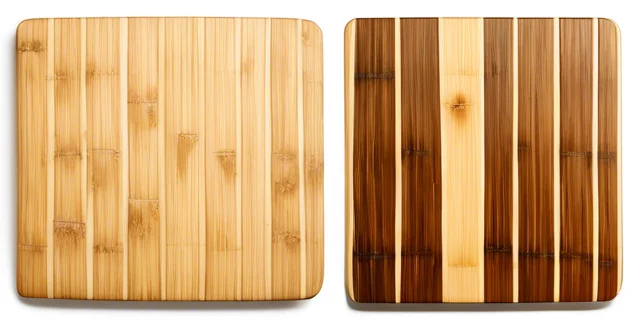
With all the variables to weigh, bamboo rises to the top as an excellent option. The natural durability keeps bamboo boards around for decades of daily use. And no other material matches bamboo for its renewable, sustainable properties.
Beyond being eco-friendly, bamboo boards offer safety for all cutting tasks thanks to the antimicrobial properties that resist bacteria growth naturally. Paired with the stylish, minimalist appearance bamboo provides, there are so many great reasons to choose bamboo cutting boards for your kitchen.
- Unmatched Durability – Dense bamboo construction withstands generations of use without splintering, warping, or knife scarring. Outperforms wood, plastic, and glass.
- Sustainable & Renewable – Made from fast-growing bamboo that regrows rapidly without replanting. Far more eco-friendly than plastic or slow-growing woods.
- Resists Bacteria – Natural antimicrobial properties prohibit microbial growth more effectively than plastic or wood.
- Preserves Knives – Hardness maintains sharp blades without causing dulling like glass or soft woods.
- Easy to Clean – Non-porous surface prevents debris from getting trapped within the tight grain.
- Beautiful Appearance – Attractive and minimal grain patterns with the warmth of natural wood.
After reading this comprehensive guide, we hope you feel confident in the outstanding benefits Bamboo boards provide in terms of longevity, sustainability and performance. Take a look through the various bamboo cutting board options to find the perfect fit for your kitchen needs and decor. The ease of care and natural resistance to wear and tear will quickly affirm why bamboo truly is the best choice for cutting boards.
As an Amazon Associate I earn from qualifying purchases.

